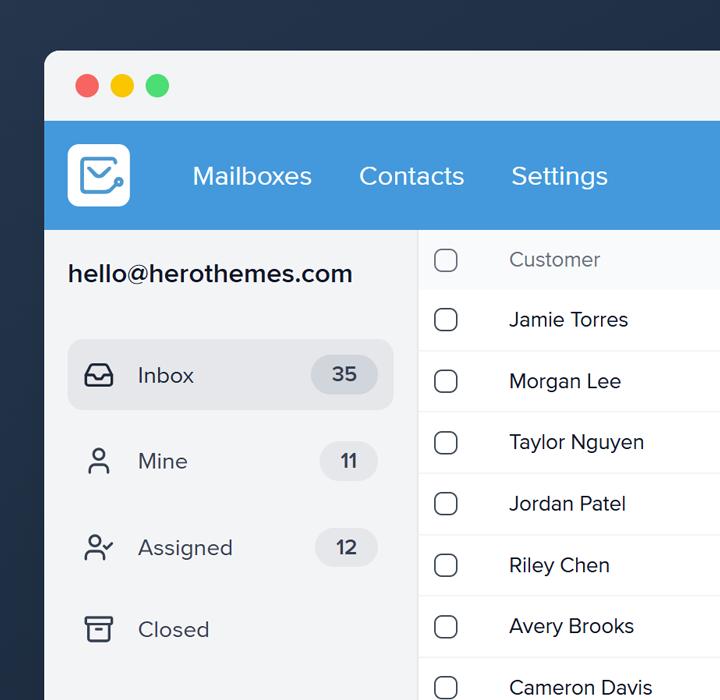You made it. We’re glad you’re here.
Tone
Friendly, conversational, reassuring
Why I Chose This
It’s informal, sure. But it’s honest. That little “you made it” signals relief. I like it when companies acknowledge that sign-up flows can be frustrating. This line has empathy baked in. And if someone had doubts before joining, it subtly validates their decision without being over-the-top.
When to Use
Use this when your onboarding has a few steps, or the user journey has friction (like long forms, verification, or approval). Also works great for communities or platforms where joining is a milestone in itself.
Tips
- Follow through in the email. Celebrate the signup. Offer a next step that feels like a reward.
- Skip jargon. Talk like you would to a friend. That’s the charm of this line.
This subject line can also be:
- Glad you joined us
- Welcome aboard
- Hey [First name], you’re in
Let’s Celebrate Together at [EventName]
Add a personal touch with “Let’s Celebrate” to evoke camaraderie and name the event to generate interest.
Readers open emails with subject lines that evoke emotion and togetherness because they feel more human.
Tone: Festive, casual
Event Invitation Email Example
Hello [Name],
We’re hosting [EventName] next [Day] at [Venue].
Expect live music, local bites, and good company
Let’s make some memories—just bring yourself and your energy.
See you there,
[Your Name]
Just a quick note to say thanks
Send an email with this subject line after a partner demo, co-marketing webinar, or favor.
The phrase “quick note” creates an expectation that the recipient will open it immediately, knowing it won’t take much time.
Avoid using too many emojis here, as they can cheapen the gesture.
Type
B2B Relationship Nurture
Tone
Casual, concise, professional
Quick favor, if you have a sec?
This subject line works because it keeps the request small. You’re asking for a favor but framing it as a light ask, something the other person can probably handle quickly.
This matters because people often ignore emails when they anticipate a lengthy task. Here, however, you’re hinting, “Hey, no pressure, just a small thing.”
Use this subject line when writing to someone you’ve worked with before or someone you know is super busy.
It’s good for internal communication or customer service requests that require a gentle approach.
Just be careful not to overuse it. If everything’s always a “quick favor,” it loses meaning.
Type: Friendly, Professional, Support
Tone: Casual, Polite, Non-intrusive
Quick chat about your portfolio next Tuesday
Questions make readers pause. Toss in a specific day to suggest low effort scheduling.
The word “portfolio” narrows focus for creatives without bloating the character count.
I recommend using this line on designers and copywriters who showcase public work.
Tone
Casual, inquisitive
Quick Check-In: How Was Your Experience?
Type
Customer Satisfaction, Post-Interaction Follow-Up, Support Feedback
Tone
Casual, Empathetic, Brief
Why I Chose This Subject Line
“Quick Check-In” feels conversational—like I’m dropping you a note rather than blasting a form.
Asking “How Was Your Experience?” shows genuine concern. This approach can lower defenses, because it mirrors language you’d use in person.
Just don’t drop a long form after this friendly tone; keep it ultra-short.
When to Use
Send this after ticket closures or service calls. Timing within 24 hours keeps impressions fresh.
Tips
- Limit to 1–2 questions so it feels like a quick chat.
- Use stars or emojis for responses to simplify clicks.
- Follow up personally if someone leaves negative feedback.
Welcome to the adventure, [First name]
Tone
Playful, enthusiastic, friendly
Why I Chose This
Subscription boxes, travel apps, and hobby communities thrive on emotion. “Adventure” paints pictures. Combine that with a name token and you ride the same personalization wave that drives open-rate gains across every industry.
When to Use
Best when your product carries exploration—think gear rentals, cooking kits, or language learning programs. Send with a hero image that shows an actual journey.
Tips
- Balance hype. Keep body copy grounded in real next steps so readers do not feel fooled by poetry.
- Invite sharing. Adventures feel bigger when users post a first win on social.
👋 Quick hello from [Company] (and a small gift)
Tone
Playful, generous, light
Why I Chose This
Emojis split opinions, yet Experian found 56 % of brands saw higher opens when adding tiny icons.
I drop the hand-wave emoji first so users spot a friendly cue even in crowded mobile views.
The parenthetical “small gift” sparks curiosity without sounding click-bait.
When to Use
Ideal for ecommerce, freemium apps, or newsletters with a coupon, template, or bonus guide. Send within an hour so the offer feels tied to signup rather than a random promo.
Tips
- A/B test the emoji; some B2B audiences prefer plain text.
- Make the gift obvious in the first line of the email to meet expectations quickly.
